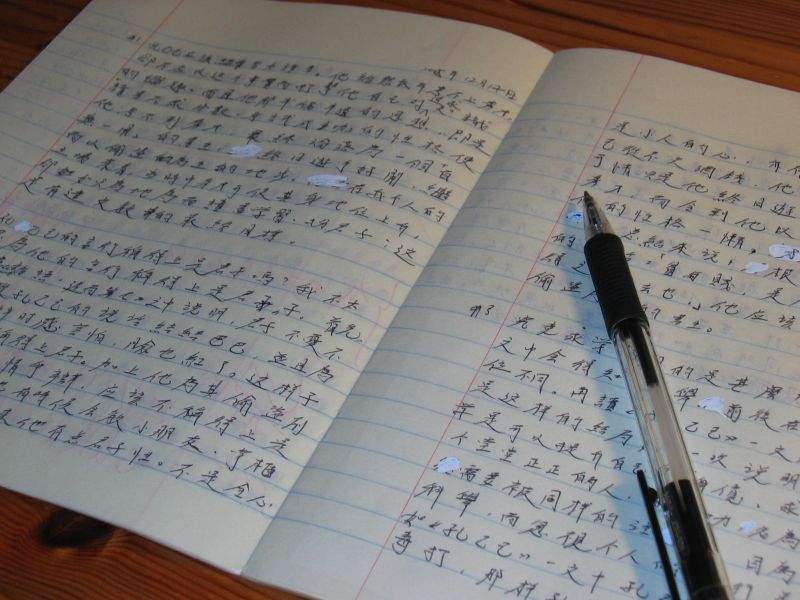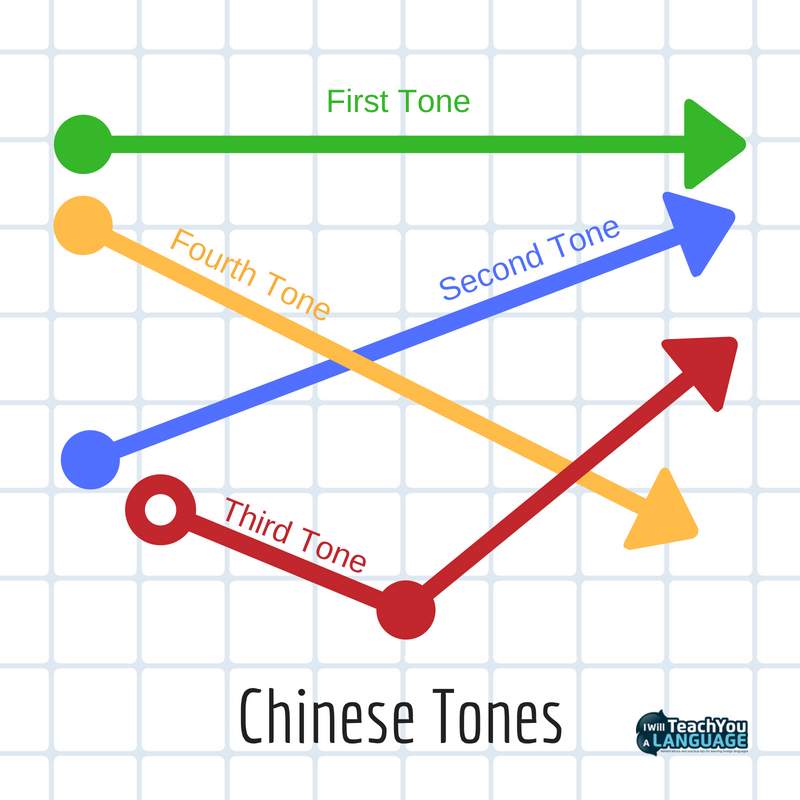
Is Chinese hard to learn?
It's a question I get asked all the time.
You see, Mandarin Chinese has a pretty intimidating reputation.
With unique sounds and thousands of strange looking characters, it seems alien and intimidating to most English speakers.
But, while Mandarin Chinese is indeed complex, it is nowhere near impossible to learn.
In fact, what most prospective Chinese learners don’t realise is that there are several fundamental aspects of Chinese that are actually easier than you think.
While the study of Chinese may challenge you, ultimately, if you’re truly motivated, there’s nothing to be especially scared of!
It really boils down to a determination to learn, the courage to make mistakes, and lots and lots of practice.
In the end, it’s not that Chinese is hard to learn. It’s just different from English and this takes time, practice and effort to get used to!
In this post, I’ll examine why Chinese is often considered a difficult language and break down some of the core aspects of Mandarin Chinese that are not as tough as you may think.
Pro Tip
By the way, if you want to learn Chinese fast and have fun, my top recommendation is Chinese Uncovered which teaches you through StoryLearning®.
With Chinese Uncovered you’ll use my unique StoryLearning® method to learn Chinese through story…not rules. It’s as fun as it is effective. If you’re ready to get started, click here for a 7-day FREE trial.
Hit play on the video at the top of the page to watch the video version of this post. Or keep scrolling to read it and discover the answer to the question: is Chinese hard to learn?
Table of Contents
Why Is Chinese Considered A “Hard” Language?
Is Chinese hard to learn? Why do people ask that? Where does Mandarin’s intimidating reputation as “hard” language come from?
Put simply, it’s mainly as a result of two things:
- A very different writing system
- The use of tones
In fact, many people are scared off the idea of learning Mandarin Chinese because it varies so heavily from European-based languages, both sonically and visually.
Not only do the sounds and written form of Chinese seem foreign to most learners, but the sheer number of characters can seem overwhelming and intimidating.
The prospect of memorising thousands of strange Chinese characters is hardly likely to fill you with confidence.
And as for the Chinese tones, well, even if you could comprehend them replicating them is a tough task.
But aside from these two obvious challenges, there are also a number of aspects of Chinese that are actually relatively simple.
In this article, we’ll look at some of these “easy” parts of Chinese, as well as demystifying the perception that tones and characters are an impossible challenge. That way, you'll get a balanced answer to the question – is Chinese hard to learn?
Tackling Chinese Characters

Part 1: Pinyin
Many people look at Chinese characters and stare back in horror at what looks to be an impossible challenge: understanding what is in front of them.
Maybe you’ve had this experience yourself before?
Luckily, there is another version of written Chinese that can help you get to grips with the language as a beginner: pinyin.
As you probably already know, Chinese characters have absolutely nothing to do with the Latin alphabets that we use in English and other European languages.
Pinyin, however, is a way of writing Chinese in a romanised alphabet so that learners can read and pronounce it without having to learn thousands of characters first.
Think of it as a familiar way to write down the sounds that come out of your mouth when you read or speak in Chinese.
Here is an example:
- English: You go to the store.
- Chinese: 你去超市
- Pinyin: ni3 qu4 chao1 shi4
See how the Chinese has been written out using a Roman alphabet so you can read and pronounce it even if you don’t understand the characters?
Note: If you’re confused by the numbers in the pinyin, don’t worry! I’ll be explaining those in just a minute 😉
As a beginner, pinyin will allow you to start to learn and use the language without having to spend all of your time memorising characters.
Pinyin Is Commonly Used On Phones & Computers
In fact, pinyin is commonly used on daily basis by all Chinese speakers when typing in Chinese on their computers and smartphones.
So, when someone is writing out a text message in Chinese, they are using the pinyin, not drawing characters!
The reason for this is that there are simply far more characters than it would be possible to fit on a computer or smartphone keyboard!
In fact, digital writing using pinyin is so common these days that some native Chinese speakers even confess to forgetting how to handwrite some of the more difficult characters.
Part 2: Starting To Learn Chinese Characters
As we’ve seen, as a beginner you can simply use pinyin and put off learning Chinese characters until you’ve started to get to grips with the language.
In fact, if you’re focused mostly on speaking, you could easily spend quite a lot of time learning Chinese without dipping a toe into the world of written Chinese at all!
But, sooner or later, you’ll reach a point where learning to read and write Chinese characters becomes important.
This is where it gets impossibly hard, right?
Not exactly.
Although there’s no way around learning Chinese characters, the good news is that today, the standard writing system throughout China is what’s called Simplified Chinese.
Simplified Chinese was introduced by the Communist government in the 1950s to replace the traditional characters in an effort to improve China’s poor literacy rates.
The result is that Simplified Chinese is easier to learn and remember, as it uses fewer strokes compared to its traditional counterpart.
Since it’s the standard written form of Chinese nowadays, the simplified system is the most logical choice for learners and it has the benefit of making the learning process a lot simpler and allows you to start reading and writing in Chinese much more quickly.
So What Does All Of This Mean For You As A Chinese Learner?
In a nutshell, what this means for you is that while learning Chinese characters is difficult and intimidating, it’s simply not something you need to worry about as a beginner.
The use of pinyin while learning Mandarin Chinese can give you a big leg-up when it comes to understanding what you read and pronouncing things correctly. It can even help you write in Chinese online conversations!
And when it does come to learning Chinese characters, the simplified systems means there’s not as much to learn as you might have thought!
Next, let’s consider the other “big scary monster” of Chinese – tones – before we go on to examine some aspects of the language that are actually surprisingly easy to learn.
What About Chinese Tones?

The second “hard” aspect of Chinese that tends to scare off potential learners are the Chinese tones.
Tones are changes in the pitch of a vowel and are similar to pitches in music which can go up or down, rise and fall or stay flat.
This means words can be pronounced the same way but still have different meanings depending on which tone is used for the vowels.
If you have never learned a tonal language, this will be an aspect of Chinese that challenges you – and honestly speaking – it’s one of the most difficult parts of the Chinese language for this reason.
The good news, however, is that Mandarin Chinese has only four main tones (which is less than many other Asian and Chinese languages).
These four tones in Chinese are also relatively straightforward to remember as they are very distinct from each other.
Before you start learning actual words in Chinese, I recommended you spend some time memorising the sound of all four tones so that when you do start learning words, you can do so with the correct tones.
The sooner you start focusing on tones, the fewer mistakes you will make and the more accuracy you will attain in your Chinese pronunciation.
Look at this example and you’ll see how the number after each vowel in the pinyin is telling you which tone that vowel should be pronounced with:
- English: You go to the store
- Chinese: 你去超市
- Pinyin: ni3 qu4 chao1 shi4
How To Practice Tones In Chinese
A great way to practice is to spend lots of time doing Chinese listening practice while reading pinyin and paying careful attention to the tonal numbers so you can learn to hear the differences.
If you’d like to find out about some Chinese learning materials I've made that include pinyin and help learners work on their listening skills, click here.
Remember, you won’t be able to pronounce a sound you can’t hear properly so listening is a big part of mastering tones.
If you practise in this way regularly, you’ll soon find that tones aren't an impossible aspect of Chinese. Rather, they’re just another thing that you have to learn, but which you can master with time and practice.
So, now you understand why Chinese characters and tones aren’t as intimidating as they first seem. But what about the rest of the Chinese language? Is Chinese hard to learn because of other aspects of Mandarin?
The good news is that it gets easier from here! To finish up, let’s look at four things about Chinese that are actually pretty easy to learn!
4 Reasons Chinese Is Easier Than You Might Realise

1. Chinese Has No Verb Conjugation
If you have ever studied a European language like Italian, Spanish or German in school you’ll know all about verb conjugation.
You know, the way the ending of every verb changes depending on who is doing the action and when they’re doing it?
It’s a nightmare and it drives language learners crazy!
Learning how to conjugate verbs is one of the most tedious and uninteresting parts of learning a Romance or Germanic language.
While Chinese admittedly has its own unique difficult aspects, the good news is that it doesn’t conjugate its verbs!
So you can kiss those verb conjugation tables goodbye!
That’s right, no verbs are conjugated in Chinese. Once you know a verb, you know how to use it for any subject you may be speaking about, whether it’s “I”, “you” “he/she”, “we” or “they”.
This makes speaking about subjects other than yourself much easier from the get-go, as the minute you have learned how to say “I need XYZ,” you immediately know how to say that anyone needs it.
Take a look at the following example. You’ll notice that the verb “to go”, 去 (qu) is the same for every subject, both in the way it is spoken and written:
Examples:
- English: I go to the store
- Chinese: 我去超市
- Pinyin: wo3 qu4 chao1 shi4
- English: You go to the store
- Chinese:你去超市
- Pinyin: ni3 qu4 chao1 shi4
- English: You (plural) go to the store
- Chinese:你们去超市
- Pinyin: ni3 men2 qu4 chao1 shi4
- English: We go to the store
- Chinese:我们去超市
- Pinyin: wo3 men2 qu4 chao1 shi4
- English: They go to the store
- Chinese:他们去超市
- Pinyin: ta1 men2 qu4 chao1 shi4
The lack of verb conjugation in Chinese will speed up your language learning massively and give you the confidence to speak and use the language from an early stage.
2. Chinese Doesn’t Have Different Tenses
Thanks to a lack of verb conjugations, there’s also another major shortcut in Mandarin – there are no Chinese tenses.
As noted earlier, several languages have umpteen tenses depending on the time, date, and even the feeling surrounding a past or future event.
Chinese, however, simply requires that you state the time period at which an event takes place at the beginning of the sentence.
From there, you can recount any event that happened in what English speakers refer to as “present tense” – which is the only one that exists in Chinese!
To see how it works in practice, have a look at these examples and notice how the verb stays the same. We simply use a “time phrase” or “time indicator” at the beginning to show when the action happened/happens:
Examples:
- English: Ten years ago, I went to the store. (Literally: Ten years ago, I go to the store)
- Chinese: 十年前我去超市
- Pinyin: shi2 nian2 qian2 wo3 qu4 chao1 shi4
- English: Last week, I went to the store. (Literally: Last week, I go to the store)
- Chinese: 上个星期我去超市
- Pinyin: shang4 ge4 xing1 qi1 wo3 qu4 chao1 shi4
- English: Yesterday, I went to the store. (Literally: Yesterday, I go to the store)
- Chinese: 昨天我去超市
- Pinyin: zuo2 tian1 wo3 qu4 chao1 shi4
- English: Tomorrow, I will go to the store. (Literally: Tomorrow, I go to the store)
- Chinese: 明天我去超市
- Pinyin: ming2 tian1 wo3 qu4 chao1 shi4
This means once you have learned this tense, you’ve learned them all and can talk about any moment in time!
Pretty easy, right?
3. Chinese Word Order Is Very Consistent

Have you ever studied a language in which the mean of phrases can change depending on whether an adjective is placed before or after the noun?
For example, in Italian, libro bello is used to describe a book that is aesthetically beautiful, while bello libro means that the actual content of the book is good. Talk about confusing!
There are many of these types of nuances peppered throughout the European languages.
However, with Chinese, there is always one set order in which a sentence should be arranged. The order is always as follows:
- TIME + SUBJECT + VERB + OBJECT + PARTICLE
Remember our trick for changing the tense of a statement? – always putting the “time phrase/time indicator” at the start of the phrase.
Now it’s more clear why the “when” needs to go at the beginning of the sentence… because that is where time always goes in Chinese!
Check out this example:
- English: It was hard to find my favourite apples when I went to store last week.
- Chinese order: last week + when I went to the store + finding my favorite apples was very hard
- Chinese: 上个星期,我去超市滴时候,找到我最喜欢的苹果是非常难得
- Pinyin: shang4 ge4 xing1 qi1, wo3 qu4 chao1 shi4 di1 shi2 hou4, zhao3 dao4 wo3 zui4 xi3 huan1 di2 ping2 guo3 shi4 fei1 chang2 nan2 de2
You may find it tricky at first to get used to the sentence structure of Mandarin Chinese.
After all, it’s quite different from what you’re used to in English.
But while it may be difficult to get the pattern down initially, once you’ve secured it in your mind, it’s just like riding a bicycle – it becomes automatic.
Follow the rules of StoryLearning and spend lots and lots of time reading and listening to Chinese and this structure will start to feel natural to you.
4. Forming Questions In Chinese Is Simple
Do you ever feel like making a statement in the language you are studying is easy, but formulating questions seems much harder?
Well, that’s because it usually is!
In a lot of languages, asking a question requires you to change the order of the words, and the inflexion of your intended meaning.
Thankfully, this isn’t much of a problem in Mandarin Chinese, as all “yes” or “no” questions can be formed by taking a statement and simply adding a small particle at the end: ma2
Have a look at how it works in these examples:
- English: You go to the store (statement)
- Chinese: 你去超市
- Pinyin: ni3 qu4 chao1 shi4
- English: Are you going to the store? (question)
- Chinese: 你去超市吗?
- Pinyin: ni3 qu4 chao1 shi4 ma2?
- English: They like that pair of pants (statement)
- Chinese: 他们喜欢那团裤子
- Pinyin: ta1 men2 xi3 huan1 na4 tuan2 ku4 zi3
- English: Do they like that pair of pants? (question)
- Chinese: 他们喜欢那团裤子吗?
- Pinyin: ta1 men2 xi3 huan1 na4 tuan2 ku4 zi3 ma2?
A particle in Chinese is a word that has a grammatical function (here it turns a statement into a question) but is not a standalone word.
You would never just say ma2 by itself.
However, add it to the end of a sentence and all of a sudden you’re firing off questions in Chinese!
Additionally, Chinese particles don't change, so there is no variation to these short, yet useful, words.
It’s simple… learn them once, use them and enjoy!
As you can see, using ma2 is really quite easy; so easy in fact, that it may feel almost like cheating!
But it’s widely used, and extremely useful for both speaking, understanding, and responding to questions in Mandarin Chinese.
FAQs About Is Chinese Hard To Learn?
How long will it take to learn Chinese?
Learning Chinese can take anywhere from 2 to 4 years to achieve conversational fluency, depending on how much time you dedicate and whether you immerse yourself in the language.
According to the Foreign Service Institute (FSI), Mandarin Chinese requires around 2,200 hours of study for English speakers to become proficient, making it a more time-intensive language to learn.
Is Japanese harder than Chinese?
Both languages are challenging, but for different reasons. Chinese has a complex tonal system and thousands of characters, while Japanese has three writing systems (hiragana, katakana, kanji) and more complicated grammar.
Japanese lacks tones, but the use of multiple scripts and grammar may make it more difficult in some respects. Which is harder depends on your strengths and preferences.
Is learning Chinese really hard?
Learning Chinese can be difficult, especially because of the tones and the large number of characters you must memorise.
However, the grammar is often considered simpler than other languages, as it lacks verb conjugations or complex tenses.
With consistent practice, patience, and exposure to the language, Chinese becomes manageable over time.
Can you learn Chinese in 1 year?
Yes, you can achieve basic conversational skills in Chinese within a year, especially with intensive study and practice.
However, reaching full fluency or proficiency in reading and writing characters typically takes longer.
Immersing yourself in the language and focusing on daily practice can help accelerate your progress.
So, Is Chinese Hard To Learn?

Well then, is Chinese hard to learn? Let’s be honest…
Learning Chinese isn’t easy.
It’s not easy to learn any language!
And Mandarin Chinese is a language that will demand a lot of your time and energy in order to understand and begin using it yourself.
But is it harder to learn than any other language?
Absolutely not.
In fact, as you have learned, many of the most difficult aspects of commonly studied European languages don't even exist in Chinese.
Yes, there are aspects such as Chinese characters and tones that are tricky for English speakers. But their challenge lies more in the fact that they’re very different from what you’re used to in English, rather than in them being inherently “hard” or “impossible to learn”.
If you're ready to take on a new and unique challenge, stretch your brain in ways you never imagined, and prove to yourself that you can learn one of the most widely spoken languages on earth, then give Mandarin Chinese a try!
If you have the motivation, difficulty will quickly cease to be an issue.
Once you get going, you’ll realise just how fun and worthwhile it can be!

Olly Richards
Creator of the StoryLearning® Method
Olly Richards is a renowned polyglot and language learning expert with over 15 years of experience teaching millions through his innovative StoryLearning® method. He is the creator of StoryLearning, one of the world's largest language learning blogs with 500,000+ monthly readers.
Olly has authored 30+ language learning books and courses, including the bestselling "Short Stories" series published by Teach Yourself.
When not developing new teaching methods, Richards practices what he preaches—he speaks 8 languages fluently and continues learning new ones through his own methodology.









































